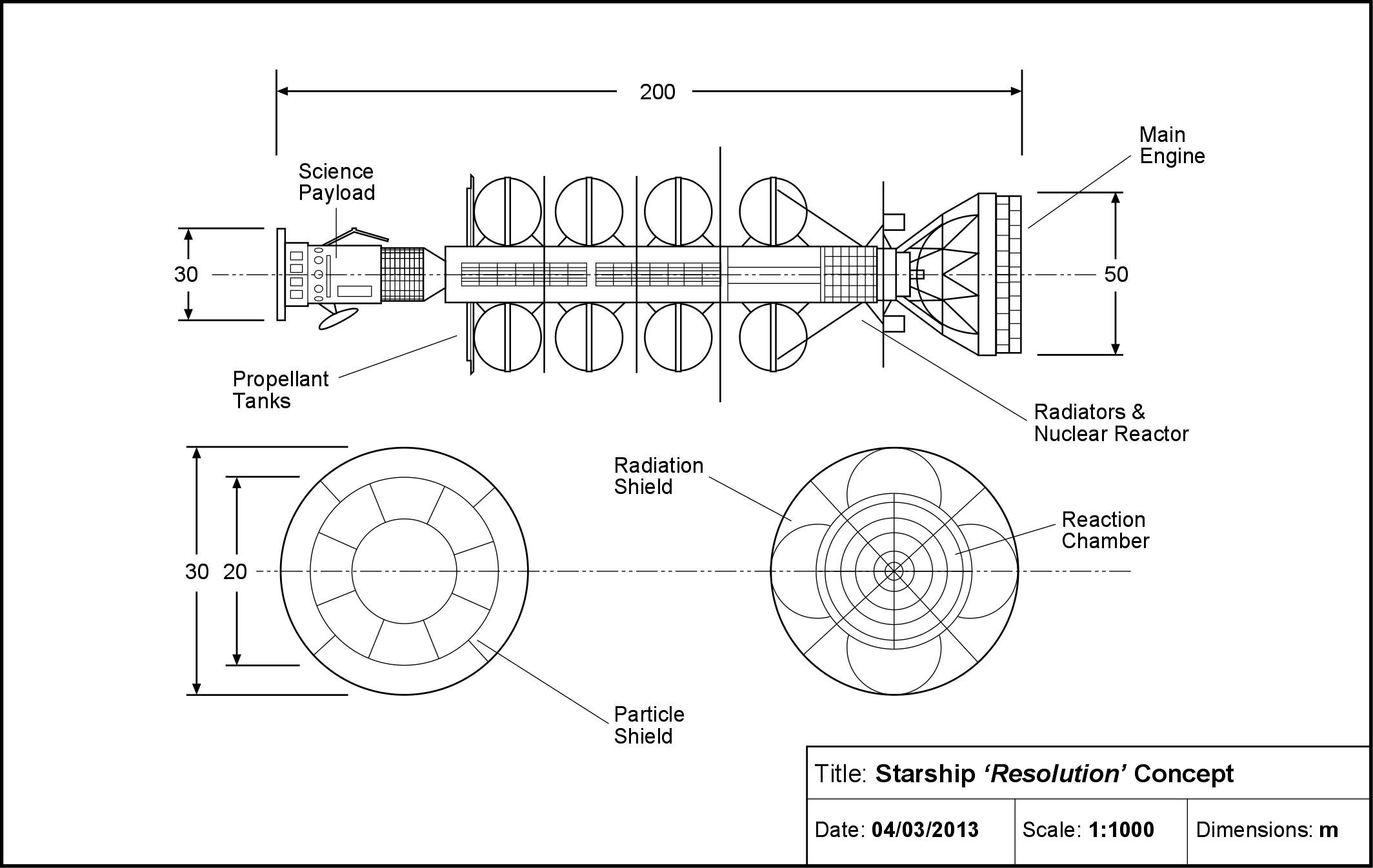The Project Daedalus study ran from 1973 to 1978 and resulted in a systems integrated study of a starship design that was unlike anything that had been undertaken previously. However, years after the study it became apparent that there were many potential problems with the Daedalus design which might result in a mission failure, many of which the team was themselves aware of and they wrote about this in a 1984 review paper by Alan Bond and Anthony Martin titled “Project Daedalus Reviewed” (JBIS, 39, pp.385 - 390, 1986).
Some of the problems identified includes excessive fatigue on the thrust chamber with the high repetition rate of 250 detonations per second, the difficulty with mining Helium-3 fuel, the use of electron beams as the main energy driver for the detonations, and the production of x-ray radiation and high energy neutrons from self-burn reactions (e.g. Deuterium/Deuterium) inside the fuel. Others also identified other issues not identified by the Daedalus team, such as the use of a Deuterium/Tritium trigger at the centre of the fuel pellets, which due to Tritium decay produce substantial heat.
There was also a desire to reduce the overall mass of the system, reduce the environmental conditions and to significantly simplify the design. This resulted in a realisation of running the numbers on just using a Daedalus 2nd stage only, but also allowing for the additional fuel so as to bring the spacecraft into full orbital insertion from reverse engine thrust deceleration at the destination target; Project Daedalus was a flyby probe only and did not decelerate.
This resulted in a design concept called Starship Resolution, which was presented by Kelvin F Long, Richard Osborne and Pat Galea in a report titled “Project Icarus: Starship Resolution Sub-Team Concept Design Report” (Project Icarus Internal Report, December 2013).
Project Icarus Starship Resolution (Adrian Mann)
To reduce the environmental conditions the spacecraft would detonate capsules at a rate of 150 Hz (instead of the 250 Hz Daedalus) and it would utilise 20,700 tons of Deuterium/Helium-3 fuel for the acceleration, followed by 3,900 tons of Deuterium/Helium-3 for the de-burn. It would carry 12 propellant tanks for the boost and 4 tanks for the de-burn. It would use the second stage capsule designs of the Daedalus concept, which were 1 cm in diameter and 0.288 grams in mass. It would have a mass flow rate of 0.0432 kg/s for both the boost and the de-burn and it would exhibit an exhaust velocity of around 9,210 km/s.
In order to calculate the spacecraft performance in detail and with confidence, a Fortran program was constructed which firstly modelled the Daedalus design as a form of numerical validation of the model. This was then applied to the new design of Starship Resolution. The calculations showed the spacecraft would accelerate for 15.18 years, followed by a cruise phase of 81.47 years, then a de-burn phase of 2.86 years, bringing the spacecraft to its target destination in 99.52 years, which was less than the 100 years Project Icarus requirement.
Project Icarus Starship Resolution (Adrian Mann)
After the acceleration phase the spacecraft would achieve a cruise speed of 14,481 km/s or 4.83% of the speed of light. It would produce a Thrust of 0.398 MN and a Jet Power of 1.832 TW. It would deliver its 150 tons payload mass (instead of the 450 tons mass of Daedalus) to its target, where it would deploy orbiters, atmospheric penetrators and ground landers onto the local planets and moons of that system. This would enable a far more in depth study of astrophysics, planetary science, geology, and astrobiology than could ever be achieved through a flyby probe alone.
However, the main problem with the Starship Resolution design was its 15 years burn time. Considering the high risk of sub-system failures, this was deemed a substantial risk to the success of the mission, and it was desirable to reduce this significantly. This resulted in a new design called Starship Endeavour, which will be discussed in a later post.
A key fact to take away from the Starship Resolution design, is that it demonstrated that it was possible to reduce the mass and complexity of the Project Daedalus design. It also demonstrated that full deceleration was possible and therefore an interstellar flyby probe was difficult to justify. In particular, if the cost of such a mission ends up being a significant cost of the global economic output, then there is an argument that one may as well just build a larger ground or space based telescope or even a space interferometer. Making the probe fully decelerate into local orbit, would permit such much more science value, and even the biggest interferometer would find it difficult to compete with that value.


